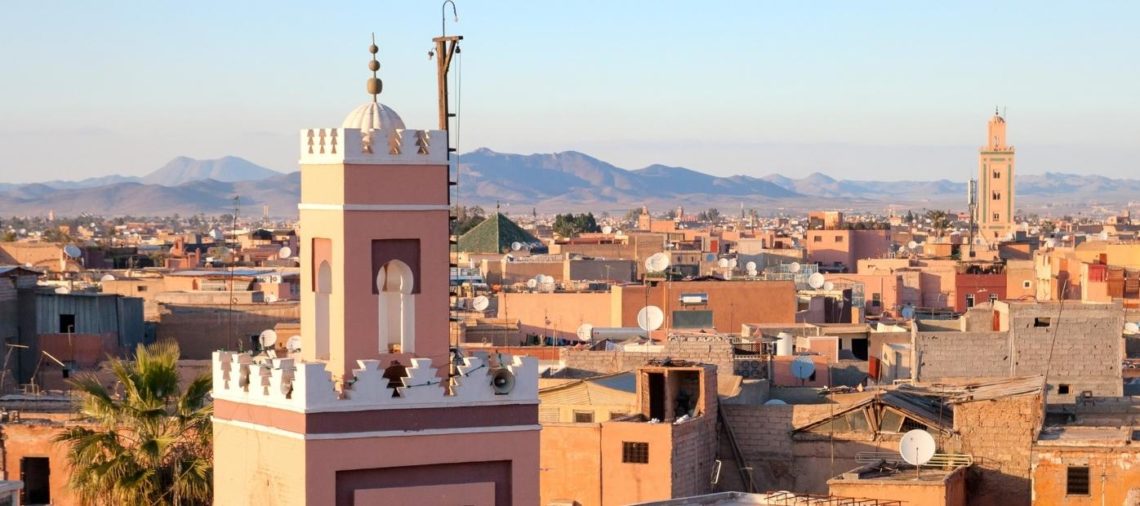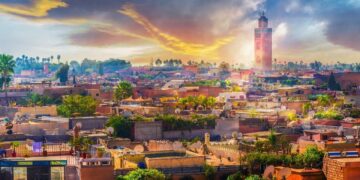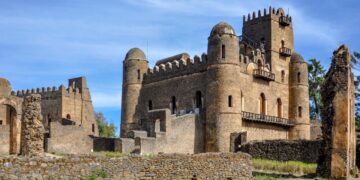If you have been in a circuit in Morocco – you know, the classical circuit – where you have seen the main cities of the country (the 4 imperial capitals – Marrakech, Meknes, Fez and Rabat – plus Casablanca and Rabat), in which of these cities you would like to come back for, say, a city-break, wishing to continue exploring its beautiful places? I admit that if I had to answer this question, I would say, instantly, Marrakech. A great city for any Morocco itinerary.
Not only because I hear Marrakech songs ringing in my ears different versions launched in the early 80s by Goombay Dance Band, Cappucino and BZN, but because this town, which is said to be the capital of entertainment in Morocco (as, for example, Meknes is the religious capital, or Casablanca is the economic capital), was the one where I felt a special vibe.
I don’t know if this vibe has left since the moment I entered the city, and I saw the scarlet buildings scattered among the many palm trees. Still, the fact is that in the moments when I was enjoying a mint tea on the floor of a coffee shop, near the madness of Djemaa el Fna Square, which was unfolding under my eyes with everything it had, I knew I would have to go back sometime in Marrakech because there’s Alladin’s treasure box.
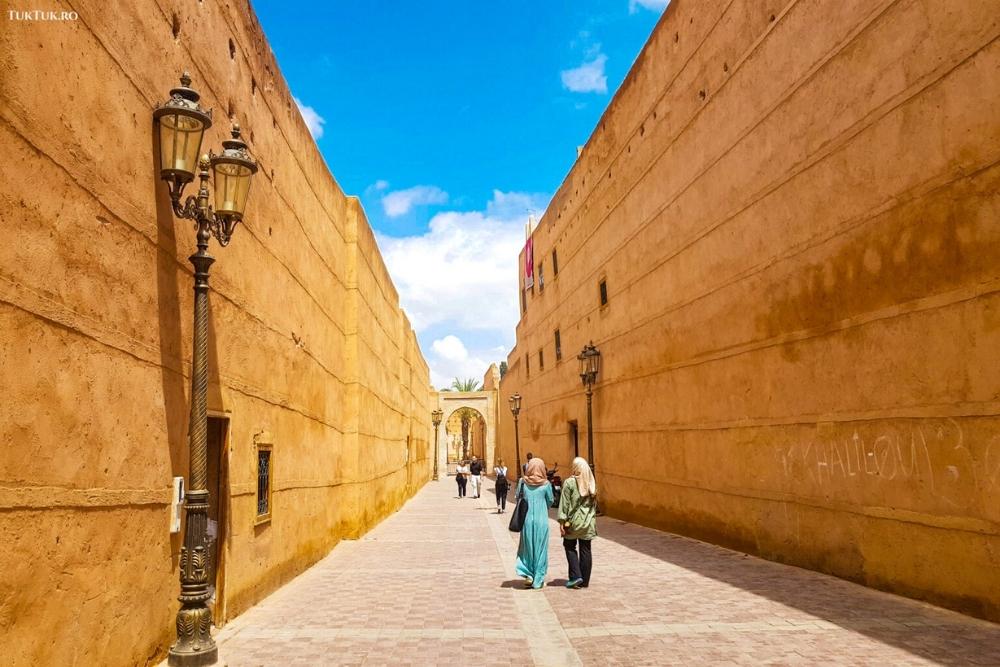
And even if some historians consider that the name of the city comes from the Arabic words murra kish, which would translate into “crossing fast”. How in the name of Allah would you quickly cross such a miracle? The phrase would have appeared to warn those traveling to Morocco not to linger too long in a city full of thieves and wild animals. Another theory, prettier, claims that Marrakech comes from the Berber phrase murr akush, which means “the realm of God.”
Moreover, in Marrakech (as in the whole country of Morocco), three languages are spoken: Arabic, French, and Amazigh. At the beginning of the 20th century, the French occupied Morocco and imposed the language spoken today by many of the country’s inhabitants. The Amazigh is a Berber dialect spoken by the Moroccans belonging to this population.
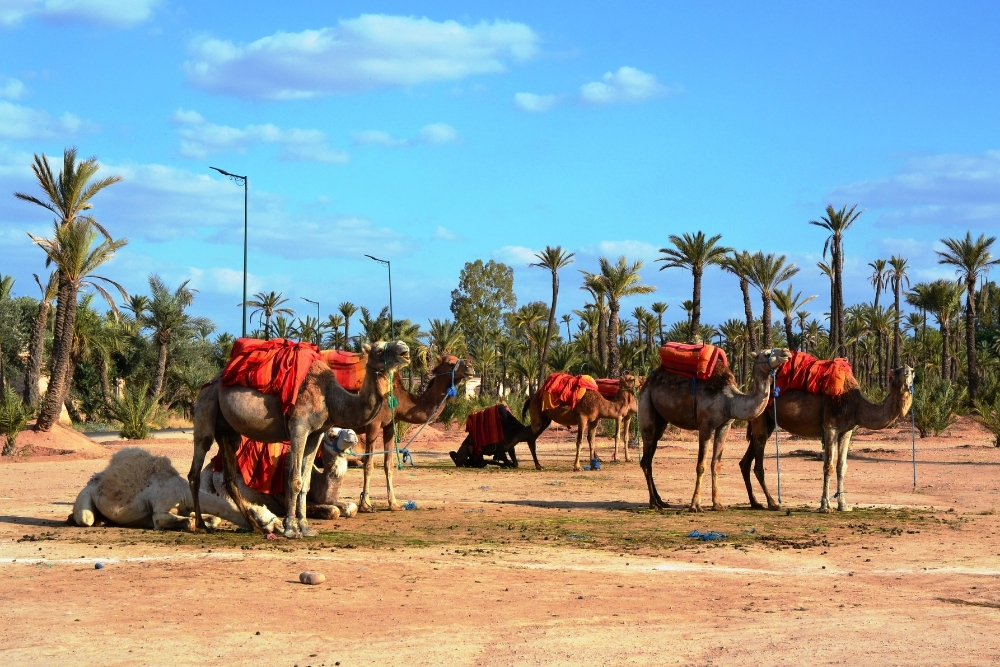
Going back to numerous palm trees, you need to know that there’s a reason for their high number: in Marrakech, there is a law prohibiting the cutting of palm trees, the fine being huge (somewhere at 500 euros for each palm cut). That’s why it’s possible to have the surprise of going down a street in Marrakech to see a fixed palm tree in the middle of it and to wonder if you’ve reached… a strange place.
Why is Marrakech called the “red city”
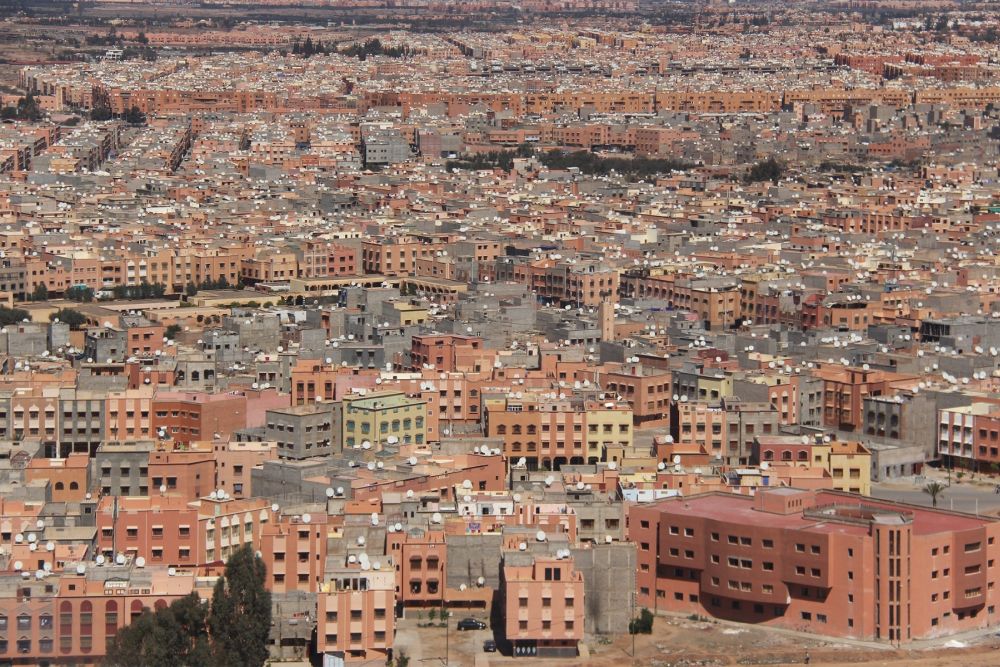
Marrakech is nicknamed “the red city” because of the color of the surrounding defense walls (under the patronage of UNESCO) and all the constructions in its perimeter, which have been ochre-scarlet since the Almokhazians ruled it.
To learn a bit about the history of Marrakech, I must mention that the city once gave the name of the empire whose capital it was. The settlement was founded in the middle of the 11th century by Yūsuf ibn Tāshufīn, from the Almoravian dynasty, and served as the capital of Almoravid until 1147, when it fell into the hands of the Almohhazians. In 1269 it passed under the control of the Marinids, who moved the capital to Fez. In the 16th century, Marrakech flourished under the leadership of the Saadi dynasty, after which the Alawites perished in the city, using it as a military outpost.
In 1912, Marrakech was captured by the religious leader Aḥmad al-Hibah, who was eventually defeated and banished by French forces led by Colonel Mangin. Under the French protectorate (1912-1956), Marrakech was administered by the Glaoui family.
The tradition of red buildings has been preserved in Marrakech over the centuries, and today you don’t see constructions painted in another color (I did not notice any). Moreover, in the old Marrakech, you will not see tall buildings; the law of this city with almost a million inhabitants says that you cannot build a house more elevated than a palm tree.
But, not to lengthen it too much, let’s see what to do and what to see in Marrakech, more precisely what would be the main touristic sights of the fascinating Moroccan city:
1 Bazaars of Medina
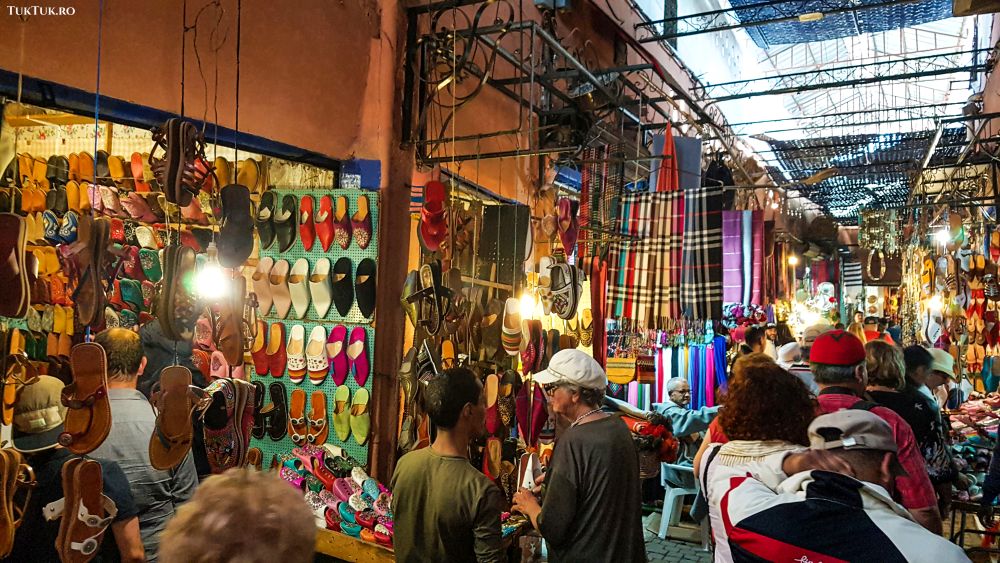
Another thing about Marrakech is that the city houses over 40,000 artisans. I don’t know if you can find everyone in the city bazaars. Still, in any case, going through the narrow alleys of these souks, you will see them in all their glory: effervescent, picturesque, agitated, always ready to bargain for a piece of cloth or 10 grams of spice.
Because, after all, one of the essences and core activities of any souk is negotiation. In Marrakech, you have a bazaar of shoes and slippers, one of the brass objects, another of ironwork, another of leather objects, another of wool, another of spices and perfumes and so on, the important thing is to have time, good legs, money and nerves to bargain. Bargaining is an art you can’t acquire anywhere better than in a souk.
2 Djemaa El Fna
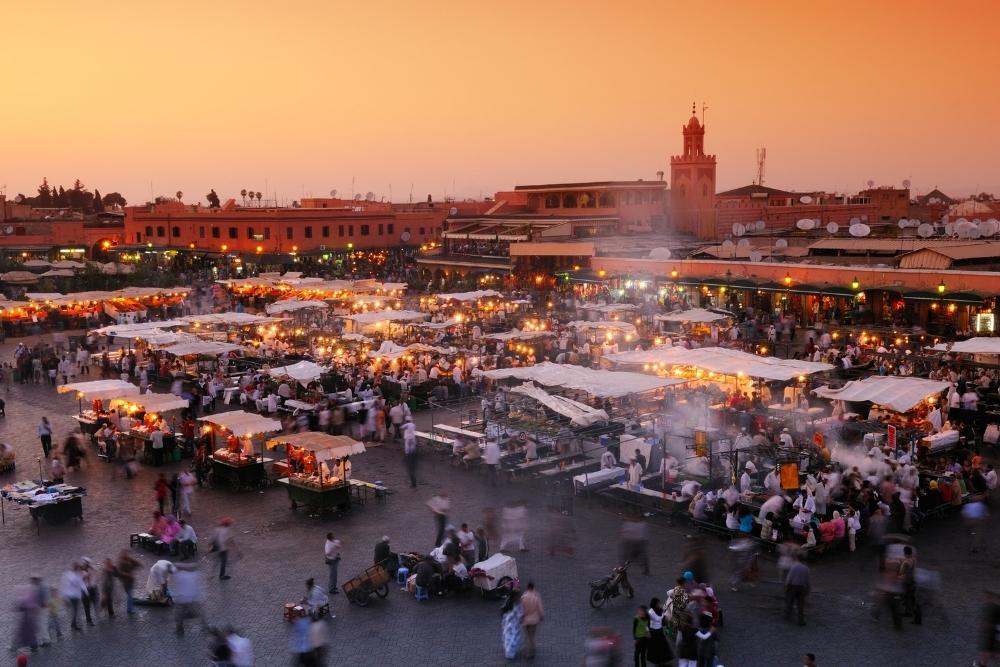
Nothing can compare to this market in Marrakech. After you walk chaotically through the mazes alleys of the bazaar, at some point, you will inevitably find one of the exits. This will throw you in Djemaa El Fna (or Jemaa el-Fnaa, as I’ve seen written), the symbol of the city and one of the most interesting cultural spaces in the world.
The square is surrounded by restaurants, stands, and public buildings, with dozens of stalls in its middle, where all sorts of commercial and entertainment activities occur. You will meet sellers of street food (some dishes can easily fit into the rules of the show Bizarre Foods), henna tattoos, riddles, poets, Berber musicians, snake charmers, Gnaoua dancers, senthir players, and the list could go on. The whole picture was described already hundreds of years ago by the poets crossing the Berber territories.
It seems that all the Morocco is gathered in this chaos of sensation, in which you sink fascinated, rotating several times until you get tired and look for a place at the height where to enjoy a mint tea, still looking eagerly at the mess of this market. Which was mentioned for the first time under the name Djemaa El Fna in the 17th century in the chronicles of as-Sa’idi, a historian from West Africa, but founded more than a thousand years ago
The recommendation is to arrive before sunset and catch the evening hours when everything magnifies. Be careful when you take photos because it’s possible that the snake charmers or those who carry animals after them harass you because you would not want to give them money.
3 Saadian tombs
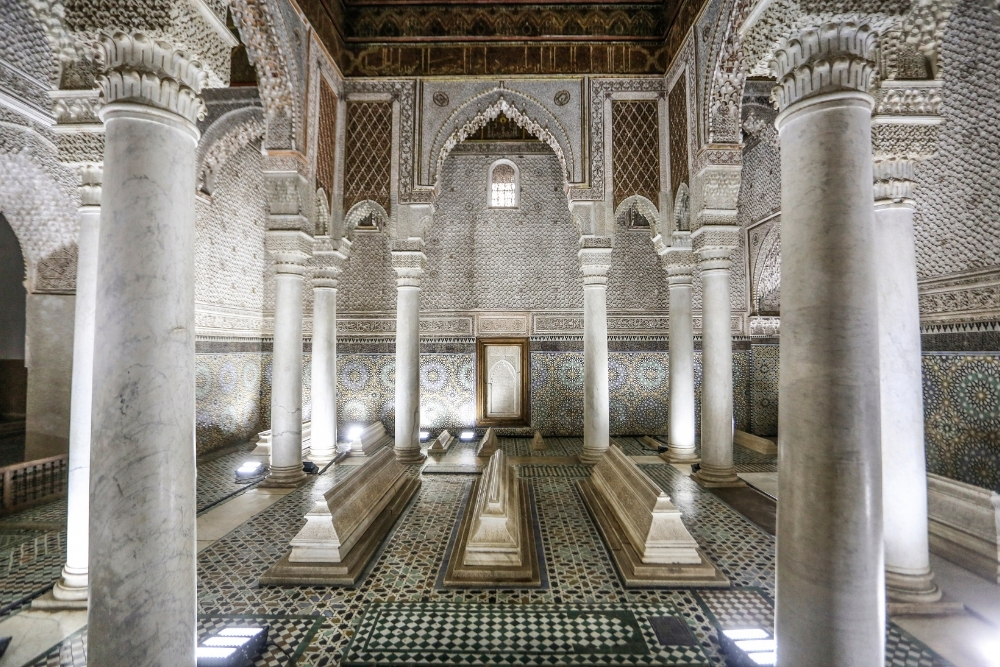
The powerful Saadi dynasty coincided with the climax of Marrakech at the end of the 16th century. Today, prominent members of the dynasty rest in the sumptuous mausoleum built from the complex on the southern side of the Kasbah mosque.
Saadian tombs dated back to Ahmad al-Mansur (1549-1603) era and remained in oblivion for almost 300 years, namely until the second decade of the 20th century when they were discovered after an aerial overflight. 66 people are buried in the three chambers, including al-Mansur, his son, and grandson, who is in the main hall with 12 columns.
The tombs are made of Carrara marble, decorated with zellige mosaics on the floors and the lower walls. Consider that you may encounter long queues (at least, they were before the pandemic), and if the temperatures are high, visiting the graves becomes slightly oppressive.
4 Bahia Palace
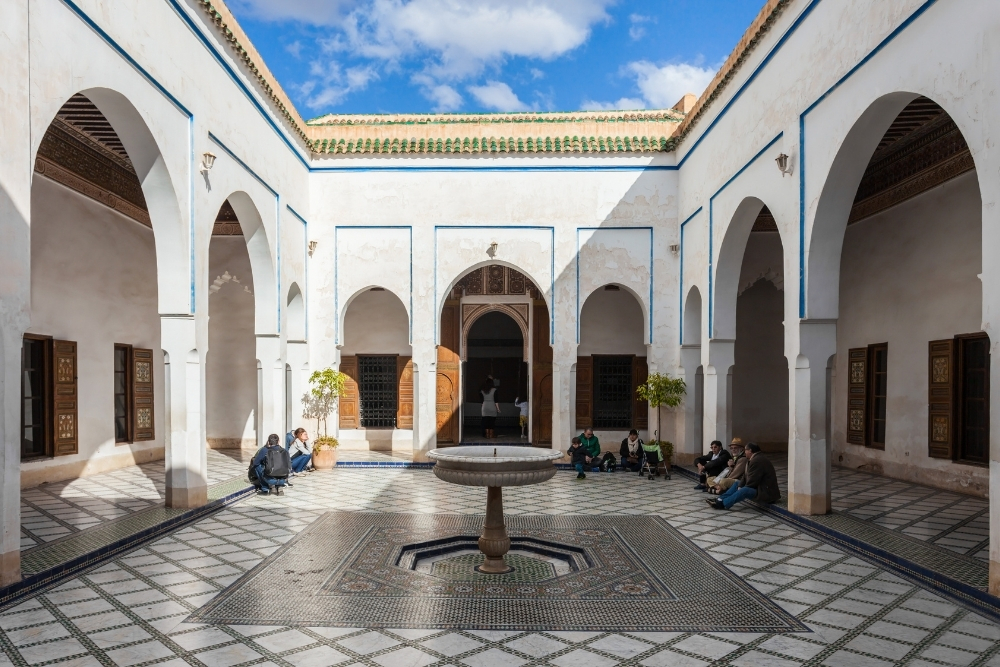
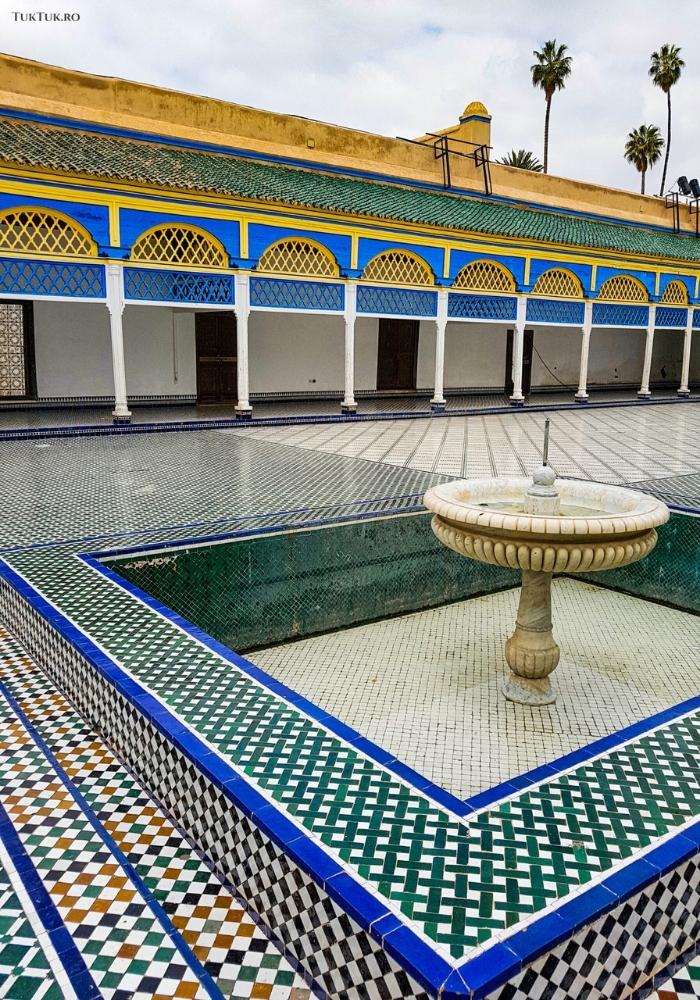
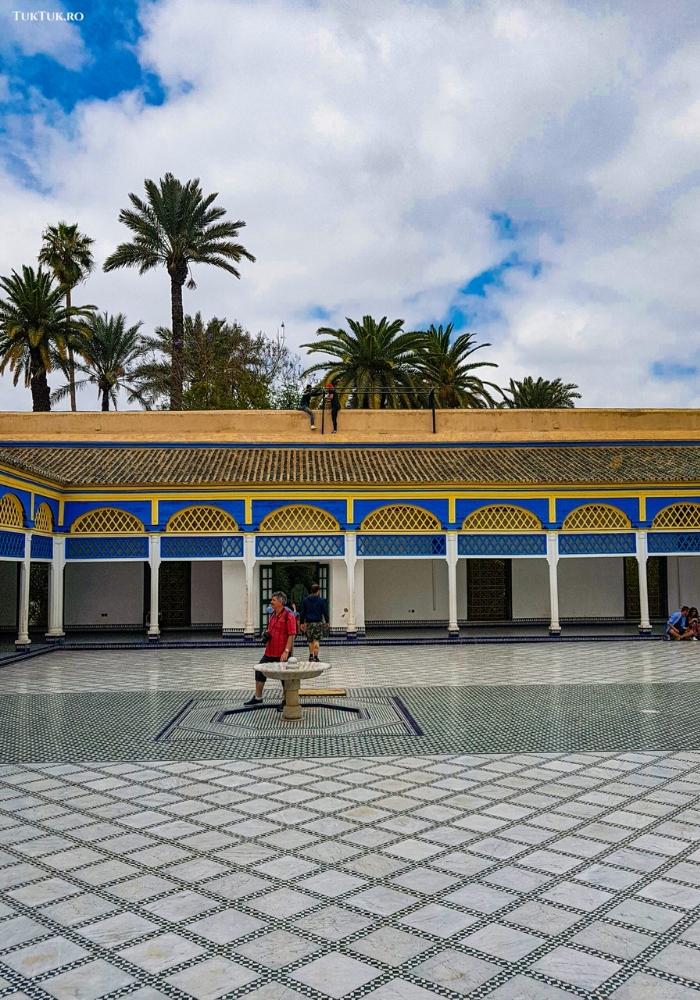
Bahia means brilliance in Arabic, and nothing can be more significant for this work of art. Perhaps the most beautiful construction in Marrakech is extremely well preserved and very interesting. The Bahia Palace was built between 1866 and 1867 by Si Moussa, the grand vizier of Sultan Muhammad ibn Abd al-Rahman.
The palace covers an area of 8000 sqm in the middle of the Marrakech medina. It has no less than 150 rooms, including a huge harem area near the Court of Honor (the vizier had “only” four wives and 24 concubines, each of the wives benefit from an apartment identical in size). During the French protectorate, the palace was used to accommodate the General Resident. Today, it is a museum open to the public, hosting many important cultural events, such as the Biennale of Marrakech.
The complex is packed with specific decorative elements, from beech ceilings to white marble, elaborate lattice, multi-colored zellige tiles, painted glass, and gardens rich in jasmine, hibiscus, lemons, and bananas. Around the palace, you will notice the school/mosque built especially for the numerous sons and daughters of the Ba Ahmed vizier. Occasionally, King Mohammed VI lives in Bahia Palace, occupying an area that is not open to the public.
5 Majorelle Garden and Yves Saint Laurent Museum
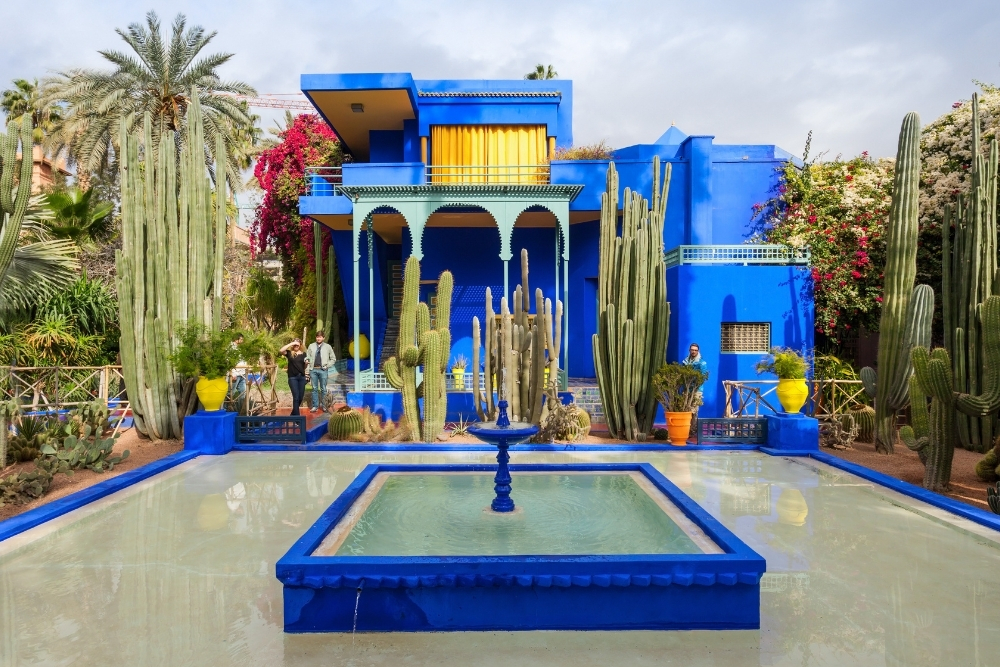
French painter Jacques Majorelle set up this garden in the 20s of the last century. Marble pools, raised alleys, banana trees, bamboo groves, palm trees, bougainvillea flowers, and many other wonders in a colorful and “living” ensemble, which is not surprising, considering that it is the work of a painter. It was said that the beauty of his garden preceded the beauty of paintings. And he put the water in the foreground of this corner of heaven that was packed with canals and fountains.
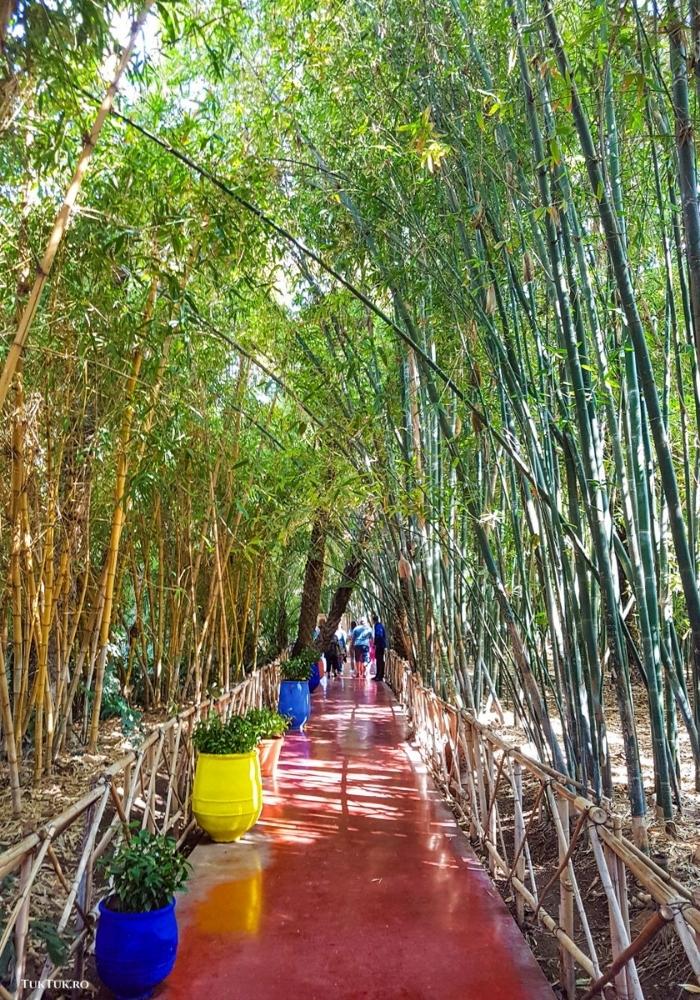
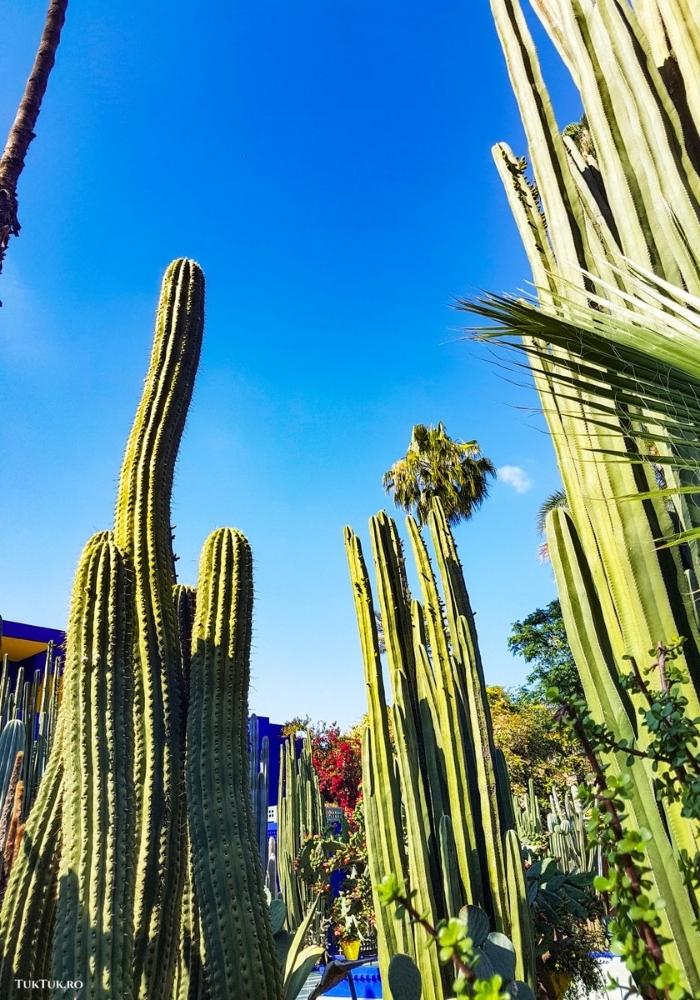
After years of neglecting the Majorelle Garden, French designer (born in Algeria) Yves Saint Laurent saved this 2.5-hectare paradise, buying it, in 1962, together with his partner, Pierre Bergé, and dismaying that Jardin Majorelle had been transformed into a hotel. The two purchased the place and decided to move here and live in Villa Oasis from the inside. Today, a memorial plaque honors the memory of YSL, who died in 2008 from brain cancer.
In the vicinity of the Majorelle gardens, the Yves Saint Laurent Museum was inaugurated in the autumn of 2017, hosting important collections from the inheritance of the Bergé Foundation, with a total of over 5,000 pieces of clothing and over 15,000 accessories made by the famous designer, together with thousands of sketches and other items which belonged to him. The permanent collection rotates 50 gorgeous exhibits, including the Mondrian dress, “Le Smoking”, the safari jacket, and the pea-bean coat.
6 Koutoubia Mosque
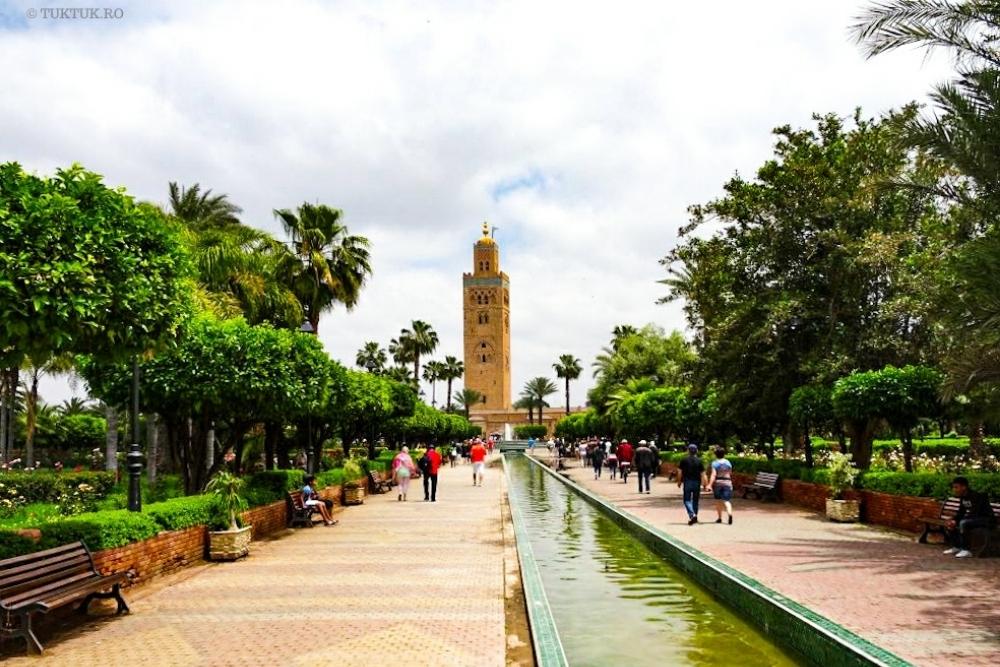
The Koutoubia Mosque is the highest building in Marrakech. That’s why, with its 70 meters high, it is visible from any part of the city. A local legend says that when the mosque was built, the muezzin (the guy who calls people to prayer) had to be blind because the minaret was so tall that someone could see in the Sultan’s harem from its top. The mosque was built in 1162 and is the most outstanding achievement of Almohade architecture. Non-Muslims may not enter the mosque, so it can only be admired from the outside.
7 Badi Palace
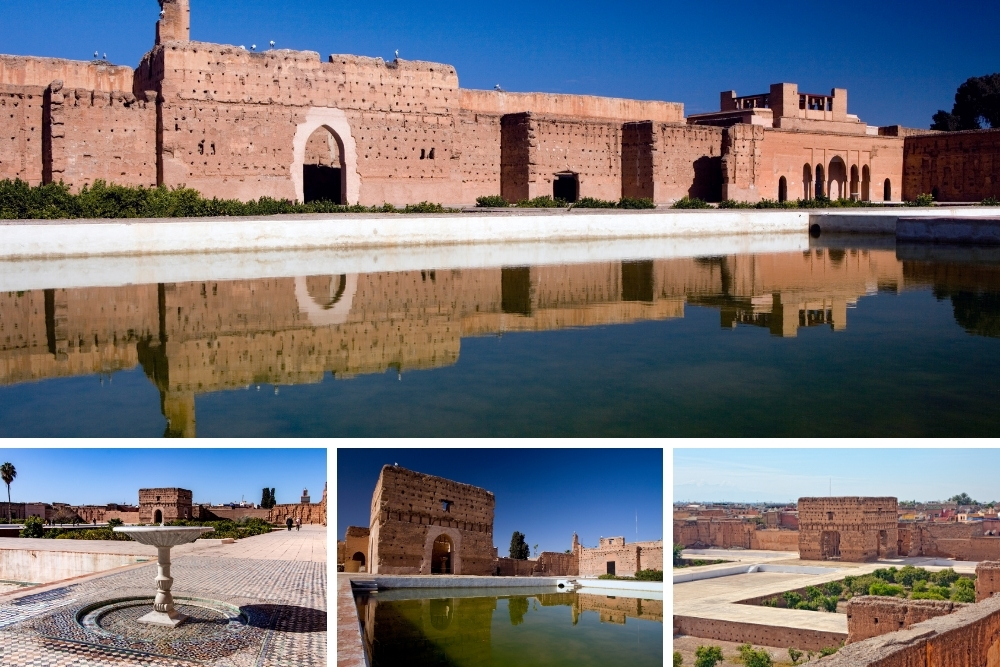
The ruins of Ahmad Al-Mansour’s once-great palace, the most important ruler in the Saadi dynasty (16th century), create the most exciting corner of the Kasbah area in Marrakesh. The Sultan had built an opulent palace, with great pavilions, surrounding an enormous garden, whose palms reflected in the vast pond. Everything was destroyed, however, after his death. Today we can still admire the floors with tiled mosaics, pavilions in ruin, and defense walls, on whose ramparts, with storks nests, you can take some excellent photos of the medina.
After visiting the Badi Palace, pay a visit to Mellah, the old Jewish neighborhood of Marrakech, founded in the 16th century and currently populated almost only by Muslims (only a few dozen Jewish families remained in Marrakech). The little synagogue was restored and, those interested can visit the vast Jewish cemetery nearby.
8 Ben Youssef Islamic School
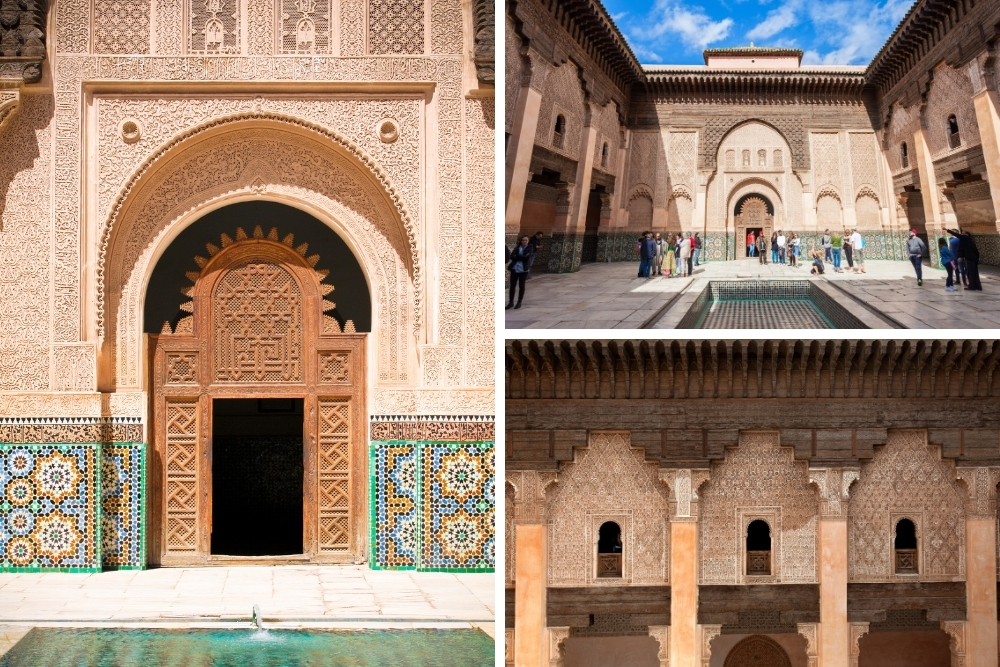
Built in 1565 by the Saadians, Medersa (madrassa means Islamic school) of Ben Youssef is Morocco’s most prominent theological faculty. Its chambers (similar to some… cells) could once hold up to 900 students. They are grouped around small inner courtyards in the purest Islamic architectural style; the main courtyard is quite spacious.
The typical Moroccan glazed tile (zellige), the stalactites hanging from ceilings, the details of cedarwood, the inscriptions used as decorations, which can be seen along with the inner courtyard, make Medersa one of the most beautiful buildings in Morocco and, at the same time, an unmissable tourist attraction.
9 Menara Gardens
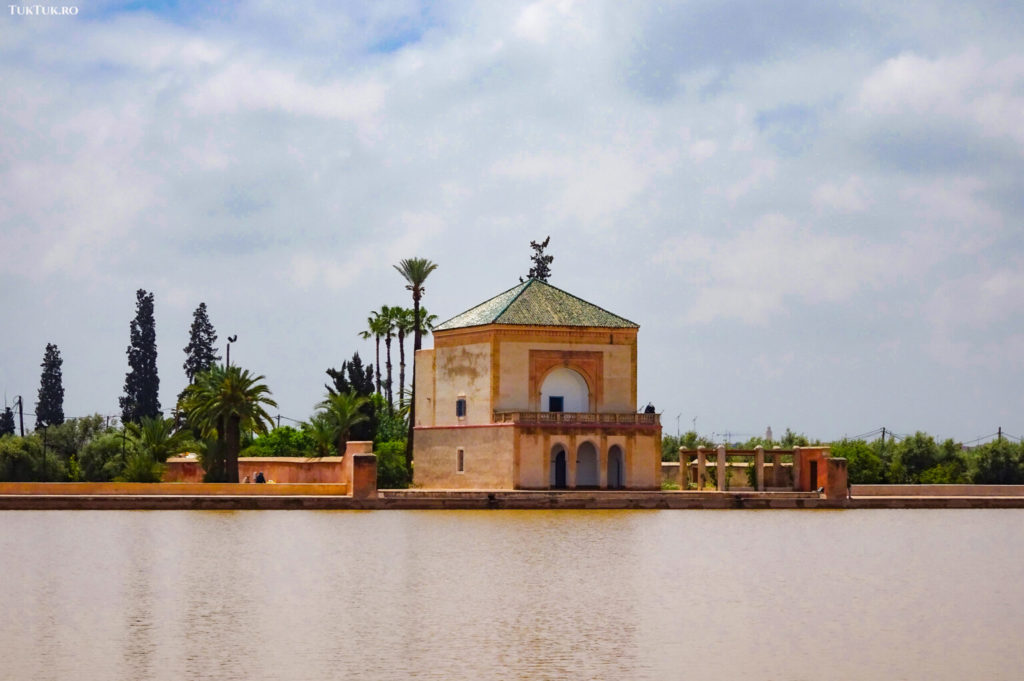
This vast garden was once a refuge for the sultans who mastered Marrakech (it has been arranged since the 12th century), currently being an oasis of tranquility and relaxation in the heart of the city. It is the favorite place of those who want to get rid of the daily hustle and bustle to reserve a few moments of peace in the middle of a landscape where olive groves are the main element.
For the tourists, however, the main attraction in the Menara Garden is the huge swimming pool, together with its pavilion, built in the 19th century. From there, you can take pictures of the Atlas mountain chain, reflected in the water, on the sunny clear days.
10 Marrakech medina
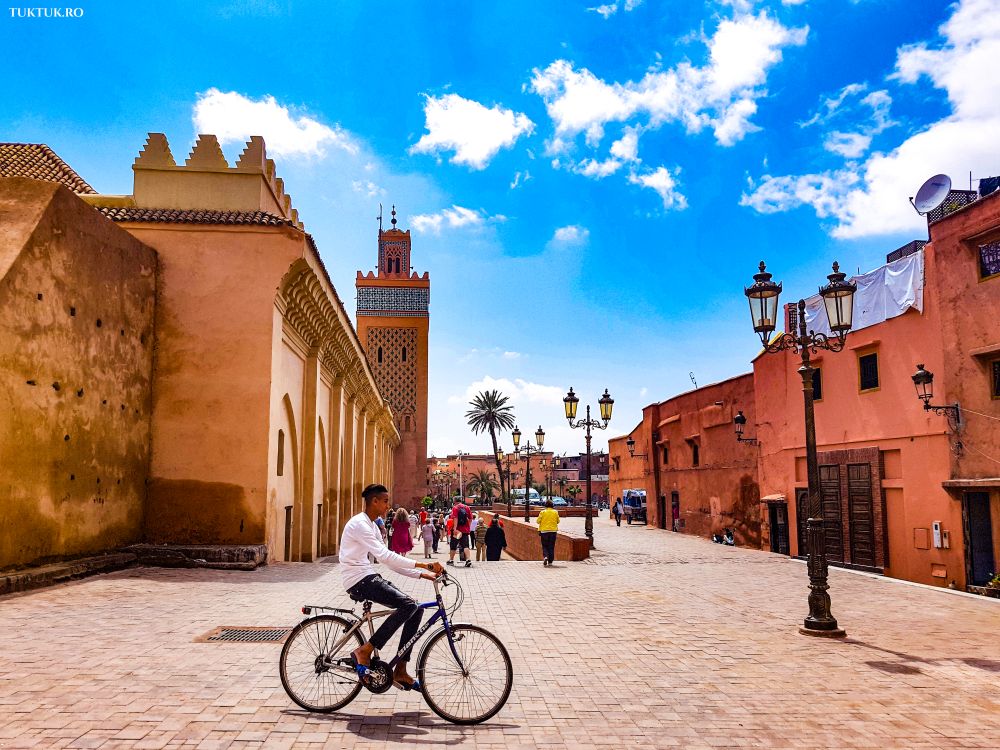
Medina is the old center of the city, located between the fortress walls. Any Arab medina has its charm, and that of the “red city” is no exception, with its narrow and winding streets and shops full of enjoyment and flavor.
Medina is also the place where, if you like, you can accommodate in a riad, the traditional Moroccan house, which has an inner courtyard and whose windows point towards a central atrium, with apartments decorated in the purest Islamic tradition. Riads are unique places where you will fully feel the Moroccan atmosphere; some of them will offer the comfort of 5 stars hotel, where authenticity is taken to maximum levels. Some of the riads in the medina were renovated and turned into museums.
And suppose you come from outside the city and want to enter the medina. In that case, the best option is to do it through the gate Bab Agnaou, the historical entrance to the kasbah, which will greet you with the beautiful ornaments that radiate from the limestone wall in which they are dug.
You may also like: Chefchaouen, the blue city of Morocco

